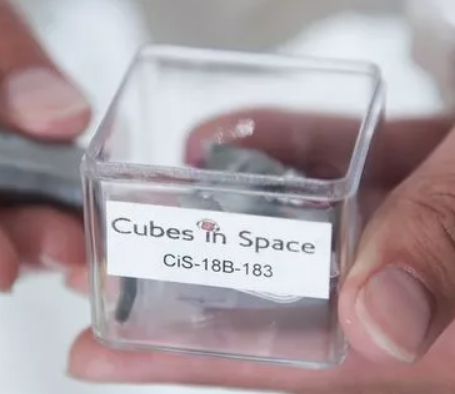Can You Make Pizza in Space? STEM Scouts Poised to Find Out
 A galaxy of supposition surrounds the modern age of space exploration, but a team of STEM Scouts is out to answer the burning question at the top of everyone’s mind—can you make pizza in space?
A galaxy of supposition surrounds the modern age of space exploration, but a team of STEM Scouts is out to answer the burning question at the top of everyone’s mind—can you make pizza in space?
Five high school STEM Scouts from Garden State Council are on a mission to solve the cosmic pizza puzzle, as well as other food-related mysteries. The team is working on a project that will test how conditions on Mars might effect living organisms, and the “implications for transport and storage of food sources on the Martian surface.”
The inspiration for this project came when STEM Scout Emily P. was contemplating the colonization of Mars, and if future Martian pioneers would be able to cook pizza. After all, what sounds better after a long day of exploring the red planet than a piping hot pepperoni (or veggie) pie?
“We asked [the group] if they could go to Mars someday what would they want to know,” STEM Scouts lab instructor Dan Januseski told the Courier Post. “And Emily said, ‘I want to be able to make pizza on Mars, can we do that?’ That’s how we kind of started on this path.”
Emily’s pizza question is actually more complex, however.

The Cubes in Space program sends students’ winning projects into space via small cubes. (Photo: Chris LaChall/ Courier Post)
“I was thinking about how space and all of the factors involved in space — like cosmic radiation, pressure, all of that — how that affected life,” she explained. “I was thinking that yeast is small. It’s an organism that has cells similar to human cells and I was thinking, well it would be interesting to see how yeast reacted to these factors.”
This line of thought is what led Emily and her four fellow STEM Scouts, Jacen J., Mason C., Jason B., and Caeden C. to develop a NASA-worthy project so stellar, it was recently selected as a winner of the Cubes in Space global research competition, created by the nonprofit idoodledu inc.
Now in its sixth year, Cubes in Space collaborates with NASA Goddard Space Flight Center’s Wallops Flight Facility, NASA Langley Research Center, and the Colorado Space Grant Consortium Space Flight Center to pack the winning experiments into small cubes and send them into space for testing.
This September, the STEM Scouts’ experiment, “Effects of Atmospheric Radiation on Yeast Fermentation,” will be set up in one of said cubes, loaded onto one of NASA’s zero-pressure scientific balloons, and embark on its high-atmospheric mission.
Once aboard the balloon, the cubes will float up to 23 miles above the Earth for between five to 15 hours. Upon completing its descent back to Earth, the experiment will be tested for radiation exposure to gauge radiation levels in the upper atmosphere.
“We’re putting yeast in little canisters and wrapping certain canisters with certain layers of lead,” Jason B. told the Courier Post. “One canister is going to be no layers and the others one, two and three. And we’re going to measure the amount of radiation that hits the yeast and see what happens, how the yeast reacts, to see if we can make bread in space.”
So the next time you’re eating a slice of pizza, just remember— someday you could be enjoying that delicious pie on the surface of Mars!
You can learn more about this outstanding project in the video below and in the full story from the Courier Post.
Find out more about the STEM Scouts program, how to get involved, and check out cool experiments you can do at home by heading to STEMScouts.org. Do you know any Scouts with a knack for STEM? Share your story in the comments!
Top image and video credit: Chris LaChall/ Courier Post
The post Can You Make Pizza in Space? STEM Scouts Poised to Find Out appeared first on Scouting Wire.
